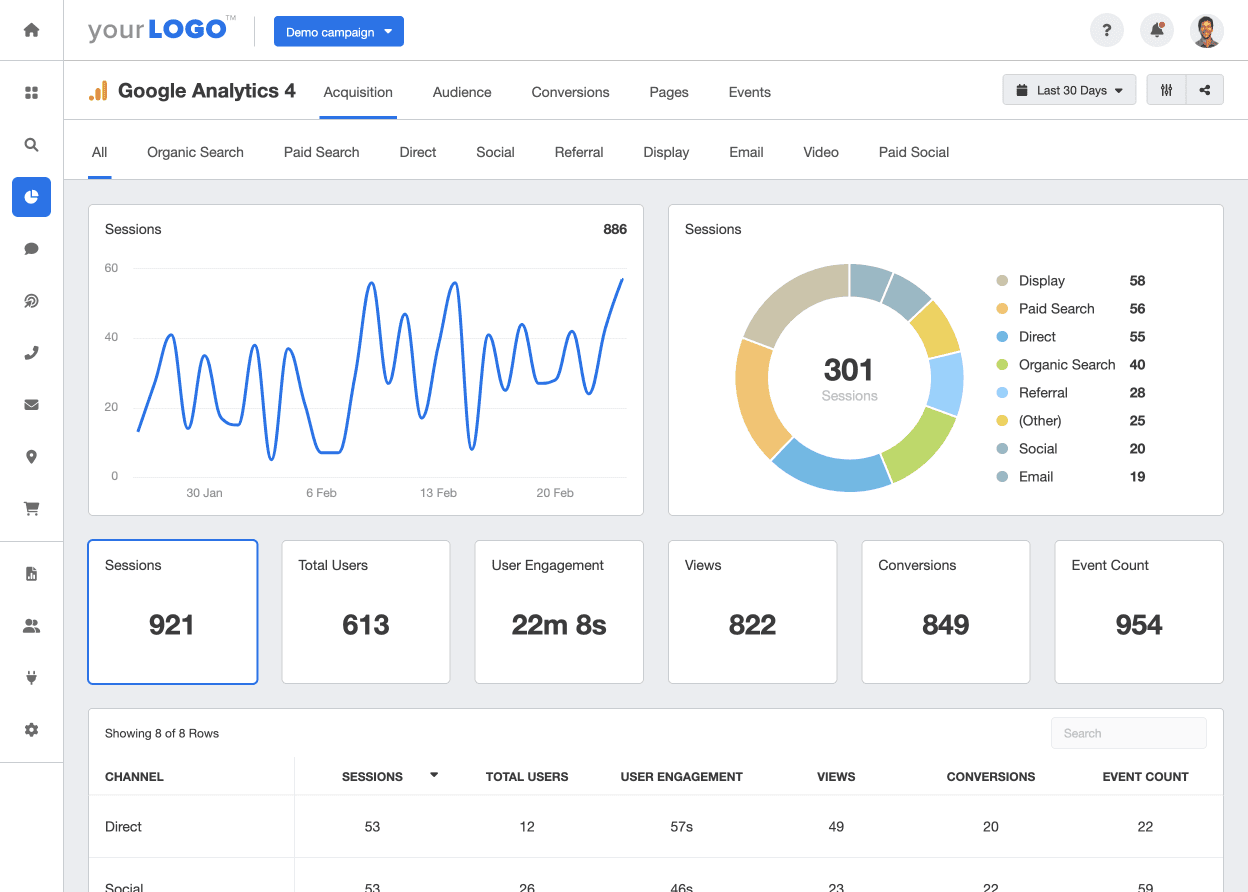Index Surge: Amplifying Your Insights
Stay updated with the latest trends and news across various industries.
Cracking the Code of Google Analytics Success
Unlock the secrets to mastering Google Analytics and boost your website's performance with expert tips and strategies!
10 Key Metrics to Monitor in Google Analytics for Business Growth
Monitoring the right metrics in Google Analytics is crucial for driving business growth. Here are 10 key metrics that can provide invaluable insights:
- Traffic Sources: Understanding where your visitors are coming from helps allocate marketing resources effectively.
- Bounce Rate: A high bounce rate may indicate that your content or user experience needs improvement.
- Average Session Duration: This metric reveals how engaged your users are with your content.
- Conversion Rate: Track how well your website is turning visitors into customers to gauge performance.
- User Demographics: Knowing the age, gender, and interests of your audience allows for targeted content and advertising strategies.
In addition to the above metrics, consider monitoring these key areas for a comprehensive view of your performance:
- Pages per Session: This indicates how effectively your website encourages exploration and engagement.
- Goal Completions: Setting up and tracking specific goals helps measure the success of your business objectives.
- Exit Pages: Identifying which pages users are leaving can inform improvements to your website flow.
- Site Speed: A fast-loading website enhances user experience and can positively impact your search rankings.
- Mobile vs. Desktop Traffic: Understanding how users interact with your site across devices helps to tailor your digital strategies.

How to Set Up Google Analytics Goals for Measurable Success
Setting up Google Analytics goals is essential for tracking the performance of your website and ensuring measurable success. Start by logging into your Google Analytics account and selecting the property for which you want to set goals. Navigate to the 'Admin' section and under the 'View' column, click on 'Goals'. Here, you can create a new goal by clicking on the '+ NEW GOAL' button. You will be presented with several templates and custom options; choose one that aligns with your business objectives. Goals can include actions like completed purchases, newsletter sign-ups, or time spent on site, which are critical metrics for measuring success.
Once you've selected a goal type, you can configure the details to specify exactly what action you are measuring. For destination goals, for example, you will set the URL of the page users land on after completing the desired action. For event goals, you'll need to set parameters such as category, action, and label. Be sure to test your goals using the Real-Time Reporting feature in Google Analytics to ensure they are tracking correctly. Finally, regularly review your goal performance under the 'Conversions' section to tweak and improve your strategies for long-term success.
Common Google Analytics Mistakes and How to Avoid Them
Common Google Analytics mistakes can lead to significant misinterpretations of your website's performance. One frequent error is not setting up goals properly. Goals allow you to track specific actions you want users to take on your site, such as signing up for a newsletter or completing a purchase. Without these in place, you may miss out on valuable insights. Additionally, failing to filter out internal traffic can skew your data; for example, if you're frequently testing your own website, this can inflate visit numbers and misrepresent genuine user behavior.
Another mistake often made is overlooking multi-channel attribution. Many users interact with your brand through multiple channels before converting. Ignoring this concept can lead to an incomplete understanding of how each channel contributes to your success. Consider implementing UTM parameters to better track campaign performance. Lastly, neglecting to regularly review and update your tracking implementation can cause data discrepancies. Ensure your tags are functioning correctly and that you're adhering to the latest updates from Google to maintain accurate reporting.